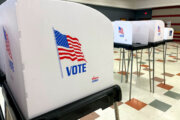Many U.S. colleges and universities are rooted in decades or centuries of history, but not all stand the test of time. Whether it’s due to low enrollment or financial instability, some schools are forced to merge in order to stay afloat — or they close altogether.
Between July 2004 and June 2020, nearly 12,000 college campuses closed, including both for-profits and nonprofits, according to the U.S. Department of Education’s Postsecondary Education Participants System. Closures continue to hit college campuses, as many were unable to rebound from enrollment declines stemming from the height of the COVID-19 pandemic.
Despite greater concern about campus closures, on top of declining confidence in higher education due to political division, cost of attendance and issues of accessibility, experts say students shouldn’t be discouraged from seeking postsecondary education.
[READ: Look for These Red Flags in a College’s Finances]
“It is still the key for long-term success and financial prosperity,” says Theodore Richardson, dean of the Bisk College of Business at Florida Institute of Technology. “I firmly believe that education still is the gateway for success. It helps a more evolved society. It gets people into higher-paying jobs, therefore they pay more taxes, which enables the society to thrive and to do better. So we need more education, not less.”
Here’s what to know about factors that contribute to college closures, and warning signs to look out for.
Factors That Lead to College Closures
Financial Issues
Throughout the 2010s, college closures typically occurred in the private for-profit sector as a result of “impropriety of some kind, generally financial,” says Rachel Burns, senior policy analyst at the State Higher Education Executive Officers Association (SHEEO).
“Institutions were closing down because they were losing accreditation because they had financial difficulties,” she says. “Those closures tended to be pretty abrupt. Students were often transferred to one of dozens of branch campuses within the same system and they happened relatively quickly in response to some federal regulation.”
However, since then, Burns says there’s been a shift toward more closures being caused by enrollment declines in both the for-profit and nonprofit space, which is linked to financial difficulties. Experts continue to worry about enrollment declines, given the impending demographic cliff due to declining birthrates — leading to a decrease in the number of traditional college-age students.
While enrollment drives tuition dollars, there’s also a lack of state spending on higher education, or inconsistencies, experts say. For instance, states spent 13%, or about $1,220 on average, less in 2018 compared to 2008, according to a 2019 report by the Center on Budget and Policy Priorities, a nonpartisan research and policy institute.
“It’s a balance of what kind of institution you are, whether you are private or whether you are public, and the contributions to the state,” Richardson says. “If it’s public, how much money is the state contributing to the education of the institutions? If it is private, how much money can you actually get through enrollment, basically, or get through contributions to philanthropy to make your institution survive? And the thing that’s hard about it is it varies by state. Because each state has a different contribution to what the public institutions are versus the private.”
Maladaptation
Mary Pope Maybank Hutson, president of Sweet Briar University in Virginia, which overcame near-closure in 2015, says some schools also stray from their mission and wait too long to navigate changes in the sector and adjust out-of-date or irrelevant academic programs.
“You should not wait for a crisis to thoughtfully and honestly examine your institution on an annual basis,” she says.
[One Culprit in Rising College Costs: Administrative Expenses]
What Colleges Are Closing?
A 2022 SHEEO report analyzed 467 institutions that shut their doors between July 2004 and June 2020. Of those schools, nearly 80% were for-profit.
“We definitely see room for for-profit colleges in the postsecondary environment,” says Burns, who is also the main author of the College Closures report. “There’s absolutely a need and use for them. They are very effective at responding quickly to demand in the employment sector, but also demand in different fields for majors that students are interested in.”
However, she adds that students should be wary of any red flags with these programs, like accreditation status.
As for nonprofits, about 18% were private four-year colleges, while fewer than 5% were two-year or public four-year institutions. These are often regional schools or faith-based institutions with smaller endowments, experts say.
The average age of current college students is above 24, says Heather Lattimer, dean of the college of education and interim vice provost of undergraduate education at San Jose State University in California. “So if you’ve got additional responsibilities of family, of jobs, of spouses, aging parents that you’re caring for, it’s really hard to move to another location and pick up where you left off. The closing of these regional publics is very much having a direct impact on the communities who are most vulnerable to that dynamic.”
Here are 10 schools that recently closed or announced plans to do so:
— Cabrini University (PA)
— The College of Saint Rose (NY)
— Iowa Wesleyan University
— Presentation College (SD)
— Lincoln College (IL)
— Quest College (TX)
— Becker College (MA)
— Vista College (TX)
— Nebraska Christian College
— Urbana University (OH)
Warning Signs of Looming College Closure
Among the institutions analyzed in the SHEEO report, nearly 70% of closures occurred through an orderly process. Students were given adequate notice and teach-out agreements were in place, providing a reasonable opportunity for students to complete their program of study. The remaining schools in the report closed abruptly, without teach-out agreements or “adequate warning.”
Especially in cases of a slow closure, experts say, there are some warning signs of imminent trouble: faculty and staff members fearing for their jobs; students being asked to pay more; frequent cutting of programs, especially popular majors; and low student-retention rates. Another red flag, particularly among for-profit colleges, is heavy recruitment and advertising.
“Obviously all colleges send out, like, mailers. That’s not a red flag,” Burns says. “But if there’s a lot of commercials or if they seem to be targeting a particular group of students, especially veterans who have GI benefits,” that could be cause for concern, she says.
[READ: What to Do if Your College Is Closing.]
College Closure Impact on Students
When a college closes, displaced students often don’t return or earn a degree.
Overall, fewer than half of students who experienced a closure re-enrolled at a college or university, according to SHEEO’s report. Of those who re-enrolled, about 47% earned a postsecondary credential, and as of February 2022, an additional 10% remained enrolled.
Re-enrollment rates were lower when there was an abrupt closure, particularly in the private for-profit, four-year sector, per SHEEO data. About 42% of students at these institutions re-enrolled when there was an abrupt closure, compared to 70% of students who experienced slower, more orderly closures. However, re-enrollment rates were similar in the private four-year sector when closures were more orderly.
Colleges closing is “a troubling trend,” says Lynn Pasquerella, president of the American Association of Colleges and Universities, a global membership organization that promotes equity in higher education. “It happens more frequently (with) for-profit institutions. Students are left out in the cold. But for two- and four-year nonprofits, there’s a good completion rate. … It was the two- and four-year for-profits that had the lowest re-enrollment rates and inability to get their credits transferred. So pay attention to the risks that you are under if you attend a for-profit institution in this environment.”
When a school closes, Pasquerella adds, students should work with an adviser or counselor to ensure that their credits will transfer and their academic program can be pursued at another institution.
Burns says a lot of the responsibility for responding to a college closure often falls on students, which is “unfair.”
“Institutions need to have some responsibility,” she says. “But institutions aren’t going to take that responsibility unless the state agencies that authorize them to operate require them to take that responsibility … to protect students. As much as we can tell students, ‘here’s what to look out for,’ it shouldn’t all fall to them.”
Searching for a college? Get our complete rankings of Best Colleges.
More from U.S. News
College Closings and Financial Aid: What to Know
How Many Universities Are in the U.S. and Why That Number Is Changing
What to Know About College Tuition Costs
Why Do Colleges Close? originally appeared on usnews.com







